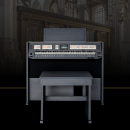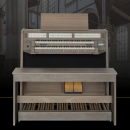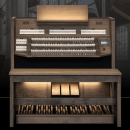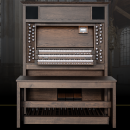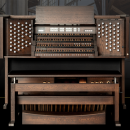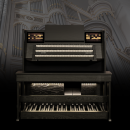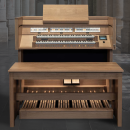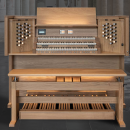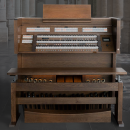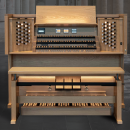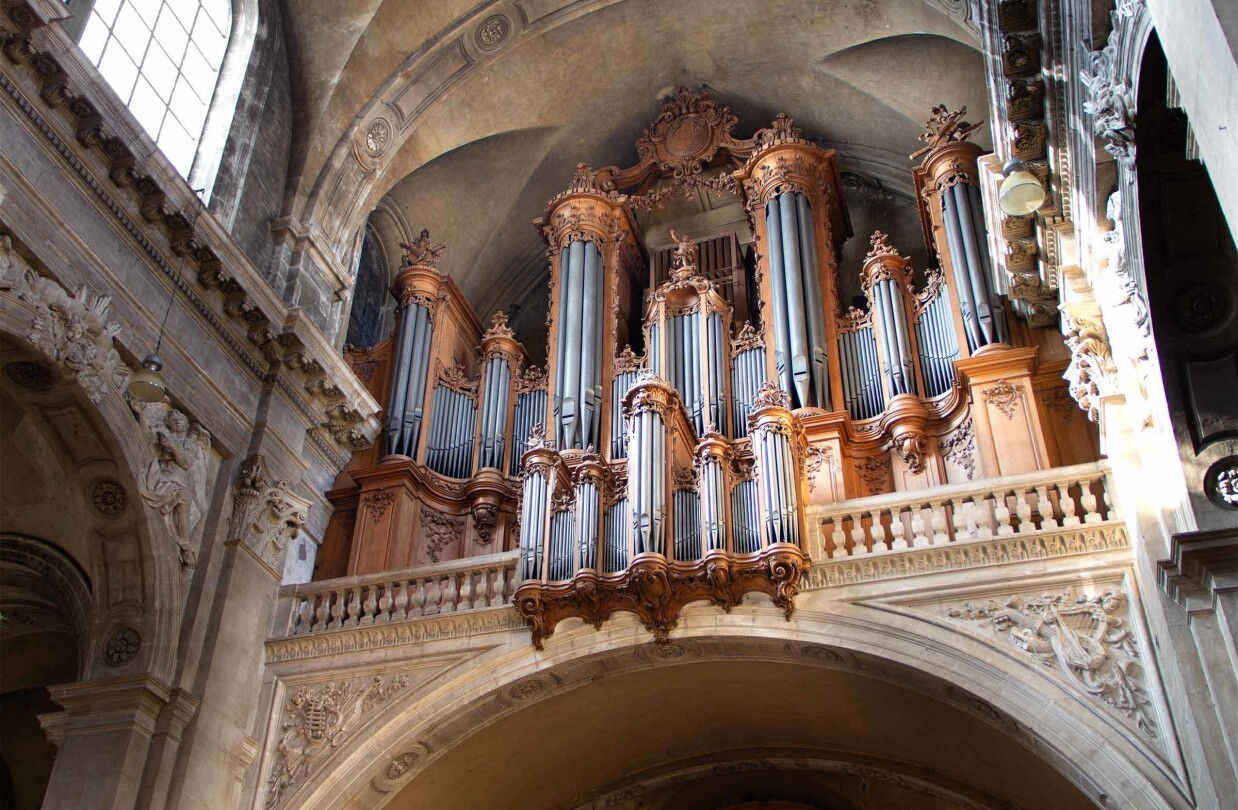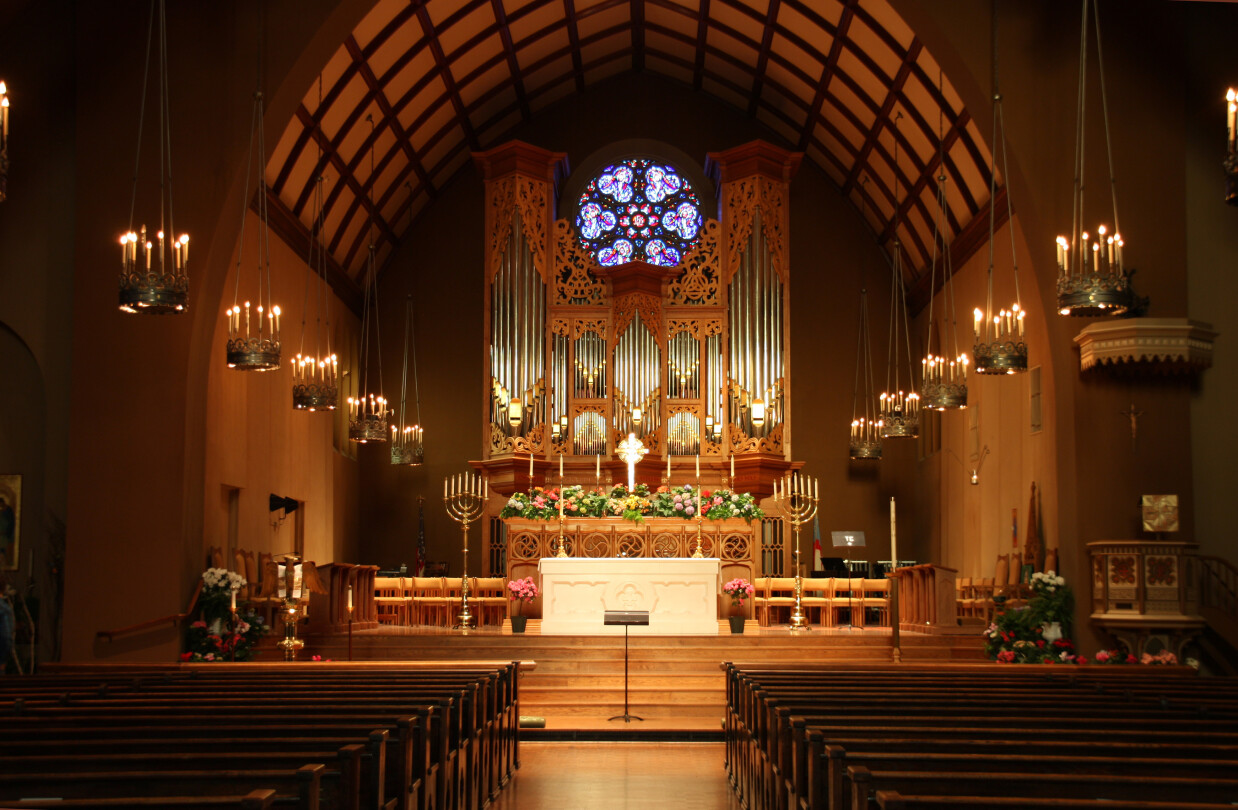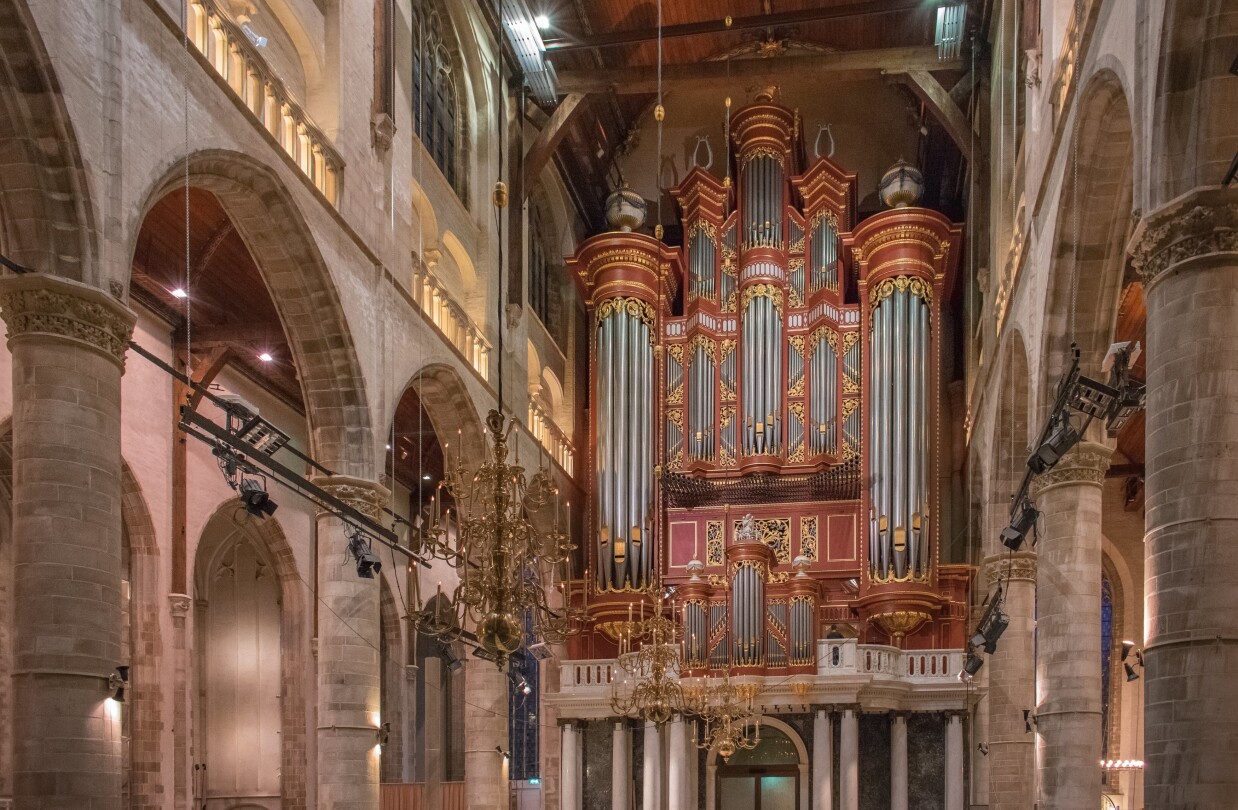Düren Annakirche
Düren is a city in the North Rhine-Westphalia region of Germany. The city was totally demolished after the bombing during the second world war. The Annakirche (St. Anne’s church) was built between 1954-56, as the previous gothic church was completely destroyed. The only remaining part of the old church is the historic portal, which was integrated into the new building. The modern church hosted a 3 manual organ, however it was considered to be of low quality, not possessing any big artistic value.
A new organ
Thanks to the efforts of many people, it was decided to build a new instrument. The work was entrusted to the much appreciated organbuilder Metzler from Switzerland. Inaugurated in 2010, it is conceived as a 3 manual organ with 48 stops and is split into 4 divisions. The main part of the organ case (above the player) houses the Hauptwerk (2nd manual) and Pedal divisions. Behind the player the Rückpositiv (1st manual) is placed. Finally, the enclosed Schwellwerk (3rd manual) is located in the back of the organ loft.

Düren Annakirche
Specifications
General
- Mezler, 2010
- 3 Manuals
- 48 Stops
